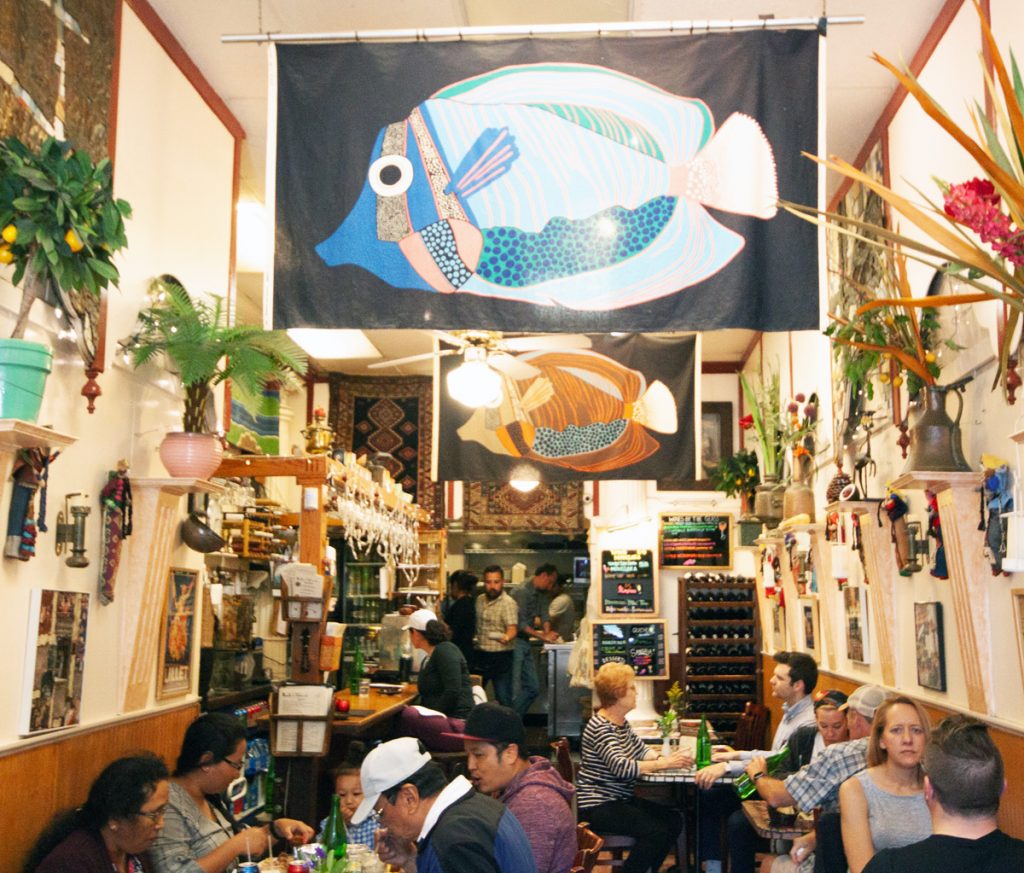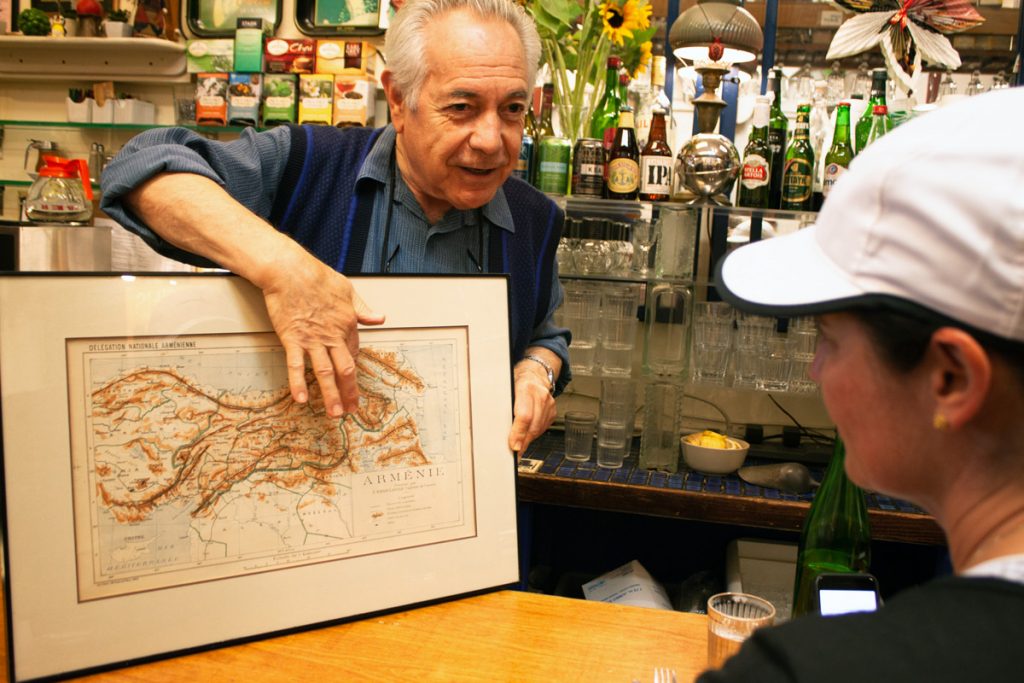By SHELLEY HANDLER
In the very affordable 1970s, the Fillmore was home to working artists, including photographer Edmund Shea. Best known for his collaboration with conceptual artist Bruce Conner and his book covers for neighbor and acclaimed writer Richard Brautigan, Shea’s work can still be seen in the neighborhood today.
Approach La Mediterranee restaurant at 2210 Fillmore, and hanging just to the right of the door is a large framed photograph of a champagne bottle on ice, with “open” splashed across it. On the reverse, the same bottle is shown upended in the ice bucket, with the message “closed” directly below.
Though champagne might seem a bit upscale for this simple neighborhood spot, it reflects both Shea’s quietly bon vivant lifestyle and owner Levon Der Bedrossian’s desire for a place at once humble and indulgent. Shea moved easily between his artistic friends and San Francisco society, where his innate charm was not lost on the ladies. In its own way, La Mediterranee has the same cross-cultural ease — still, after almost 40 years, drawing a mix of creative locals and tony denizens of Pacific Heights.
Shea was a fixture at La Mediterranee’s tiny bar, schmoozing with workers and customers and fueled by a steady flow of espresso. Der Bedrossian remembers Shea’s high, infectious laugh and blue-eyed beam.
“You would hear that laugh across the room. He could talk with anyone, seemingly endlessly. He was a kind of neighborhood ambassador,” Der Bedrossian says. “I was much more of an introvert, so I reached out to the neighborhood with my little cafe. It was both my business and my personal work of art. The first things I hung on the walls came from my apartment. This place has my sweat, my tears and my heart in it.”
Edmund Shea brought me to the restaurant in its first year, 1979, and I was charmed by both the atmosphere and the food. Ever since it opened, La Med has been a staple in the ever-changing assortment of eateries that dot the Fillmore corridor. Unlike the trendy spots that come and go, it has offered mostly the same dishes for all its years.
“When I imagined the kind of cafe I wanted, I knew it needed three things: good atmosphere, good food and good prices — and with atmosphere, I include service,” says Der Bedrossian. “The friendliness and skill of my servers are what create a welcoming place. I also knew I did not want to micromanage my staff. So I had to hire people that I could train and trust to run it well.”
His hands-off yet nurturing style clearly works. Gustavo Villareal, a cook, started at La Med at age 16 and is now a grandfather. His general manager, Alicia Vanden Heuvel, began as a server 20 years ago. “I tell all my staff the same thing: Serve people the way you’d like to be served,” Der Bedrossian says.
This lesson clearly was not lost on Arthur Bedikian, a La Med waiter of 20 years. He greets regulars with a hug and comments on the growth spurts of children quickly becoming adults. And he chats with everyone.
On a recent Saturday night, Bedikian touched on Der Bedrossian’s roots: He’s Armenian, born and raised in Lebanon. Bedikian is also of Armenian descent, and a rare figure in this transient town: He was born and raised in the Sunset, and lives there still with his own family of three. In his hands, service has the feel of a magic trick, as plates appear with a swift flourish. He is an essential part of this warm environment, and the warmth is as sustaining as La Mediterranee’s well-practiced fare.
On my first visit in 1979, I fell in love with the chicken cilicia, a three-bite version of a Moroccan bastilla. The filling — braised chicken and almonds flavored with cinnamon, sugar, cumin and turmeric — is wrapped in layers of crisp, buttery phyllo dough. To my delight, this treat is still as good, if not better, than it was on my first sampling almost four decades ago. And the torshi — tart, bright pink beet and turnip pickles — still make an ideal accompaniment to the richness of the cilicia and their other phyllo-wrapped delicacies. Other comforting dishes, such as the lamb lule and the chicken pomegranate, hold up equally well. Swimming against the trendy tide, this is go-to food in a go-to environment, both delicious and dependable.
And it will likely endure for a good while longer. “I can see myself here for at least another five years,” says Der Bedrossian, who is 67. “Beyond that, I can only hope someone, possibly on my staff, loves it as much as I do and will carry it on.”
Filed under: Food, Drink & Lodging, Locals






